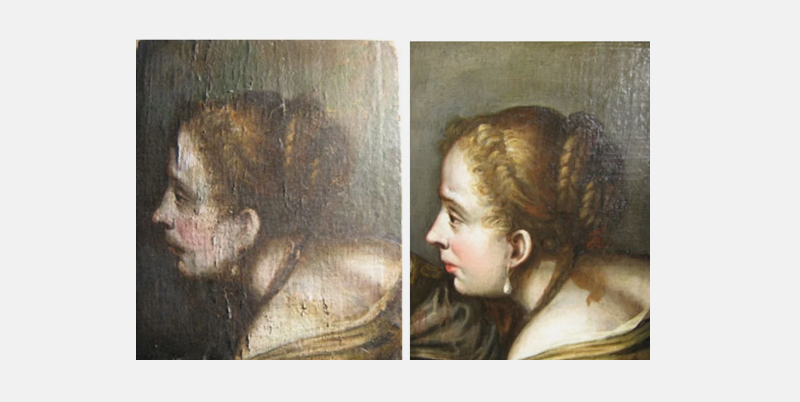How do conservators restore damaged art works, what does it cost, and how does it impact value?
Imagine walking through a beautiful exhibit of famous paintings at a museum. You look closely at a Picasso and lean forward in admiration. Suddenly, you lose your balance and, without thinking, latch onto the painting to catch your fall. Whoops. You’ve left a fist-sized hole in a million-dollar painting. It may sound impossible, but it happens more often than you think.
Structural and Aesthetic Damage
Though people often refer to conservation and restoration as one entity, they have a few distinctions. Conservation is the profession and the starting point for a conservator, whereas restoration describes parts of the process.
Beyond conserving the original materials, conservators consider the restoration side of their practice to encompass areas requiring fillers, colors, or coatings to reconstitute a missing component of the art. The process is tedious and an art form in itself. Art conservators see variations of damage, but they all fall into one of two categories: structural or aesthetic.
Structural damage might be the result of storage in an improper environment, the deterioration of materials, or poor handling practices. Human intervention falls into this realm and is a top contender for what causes the most damage to art. Aesthetic or cosmetic damages are due to the fact that the artwork has old varnishes, causing discoloration, or has paint flaking off the surface.
The Cost of Conservation and Restoration
Museums have access to technical equipment that independent conservators lack, according to Rhona MacBeth, a conservator at the Museum of Fine Arts in Boston. For example, museums have X-ray machines, which allow conservators to look below the surface of paintings to document their condition and quality. Infrared cameras can cost $50,000 to $100,000, but conservators can also perform repairs with SLR (single-lens reflex) cameras that cost approximately $1,000.
The Biggest Cost is Time
“Time, experience, and the training that people have is what customers are paying for,” says Himmelstein. “Conservation is time-consuming, so that’s where the cost is.”
Time accounts for the largest expense because conservation is labor-intensive. MacBeth and Dorman work with professional staffs to conserve and restore museum pieces. Moreover, museums often work on multiple pieces at once with various deadlines.
Conservators say that it can take two to three weeks to restore a painting. However, this timing can vary depending on a piece’s condition, the extent of damage, and the painting’s size. A large painting with extensive damage could take months and, in some cases, years
